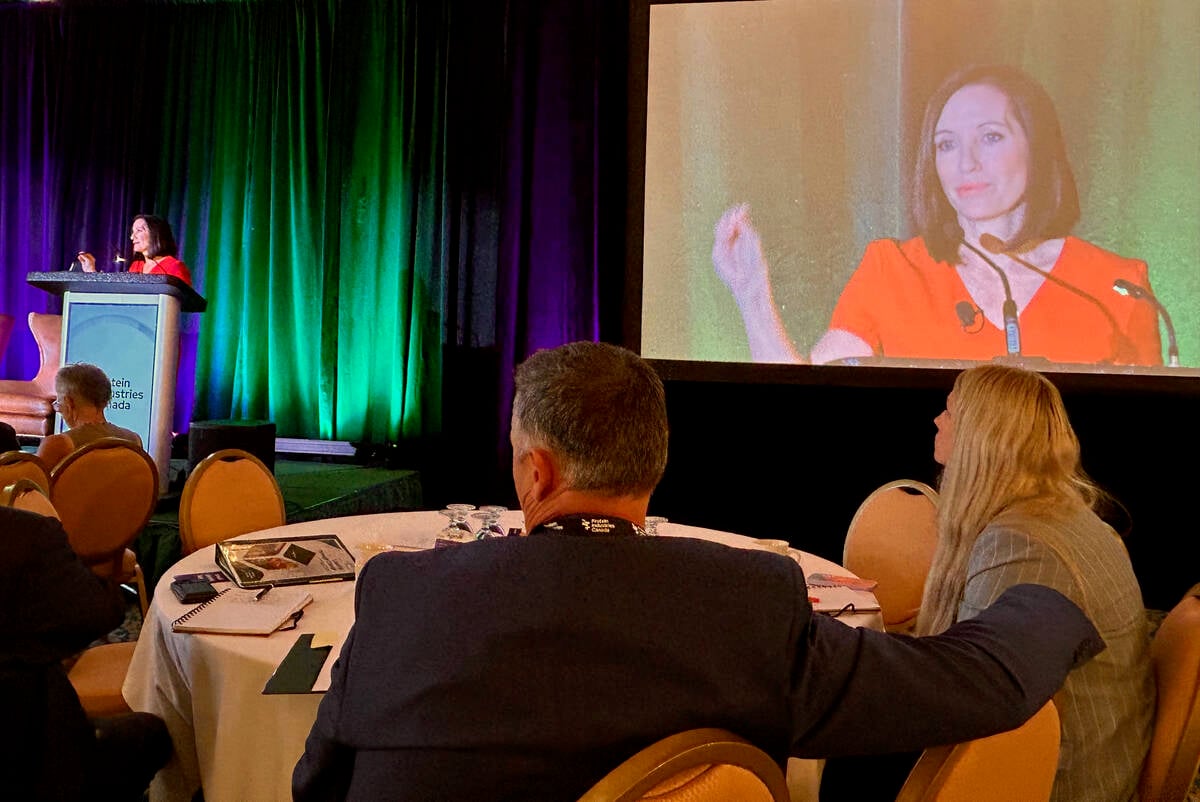SHERWOOD PARK, Alta. — Premise identification was the easiest way to contact livestock owners during last year’s fire in Fort McMurray, Alta., and when bovine tuberculosis was found in southern Alberta later in the year.
“Having the information where the animals are located in the system allows you to target your responders to be effective in that risk area,” said Allan Pelletier of Alberta Agriculture.
Identifying a premise allows officials to get in touch with owners more readily if animals are at risk in the event of disease, fires, floods or threatening weather.
Read Also

Canada told trade crisis solutions in its hands
Canadians and Canadian exporters need to accept that the old rules of trade are over, and open access to the U.S. market may also be over, says the chief financial correspondent for CTV News.
The system was activated to locate animals quickly and notify owners during the fire at Slave Lake, Alta., in 2011, a pipeline leak near Red Deer in 2012, flooding in southern Alberta in 2013 and 2014 and the fire in Fort McMurray last year.
Premise identification is part of livestock traceability and has been the law in Alberta since 2009 under the Animal Health Act. A premise is a parcel of land where livestock or poultry are kept or disposed of. Each premise receives a unique number. In Alberta, each number starts with the letter A.
A PID is required if someone operates a commingling site such as a stable, fairground or community pasture. That number needs to be provided to the users of those sites.
Rules have eased for horse owners. Many board their horses so the animals are never at the home of the owner. Therefore, the owner does not require a separate PID and can use the number from the stable when making purchases at farm retail stores or applying for agriculture programs, Pelletier told the Alberta Horse Conference held in Sherwood Park Jan. 13-15.
The PID includes land location, contact information for emergencies, owner of the animals, type of premise, type of animals and capacity at the site.
In Alberta, a PID number is needed to complete transportation documents such as manifests, selling animals at auction, applying for agricultural grants and buying medications at an authorized farm supply store.
This does not apply to feed or medicated feed purchases.
Some identification information will be available to authorized stores in the near future so that retailers can look up a location and obtain the customer’s number when purchases are made.
The Alberta Agriculture Information Centre can also provide the number if a person has lost it.
The centre can be reached at 310-3276.
For more information, visit www.agriculture.alberta.ca/premises.

















